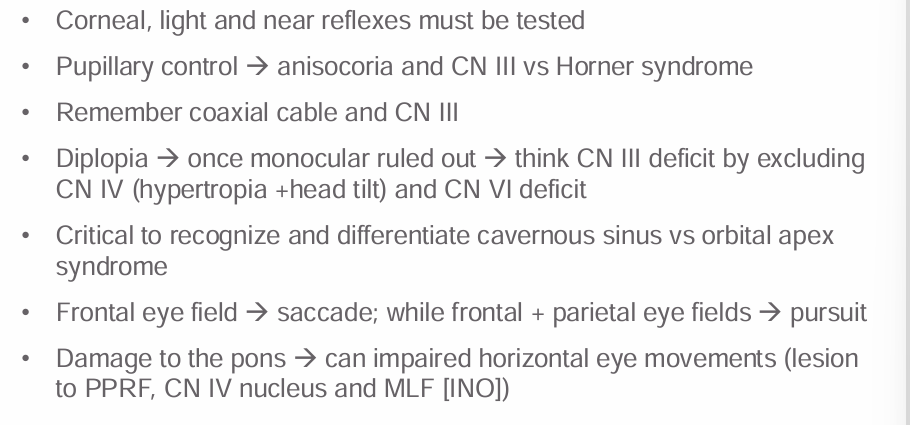Brainstem- Eye Movements
1/36
There's no tags or description
Looks like no tags are added yet.
Name | Mastery | Learn | Test | Matching | Spaced |
|---|
No study sessions yet.
37 Terms
purpose of eye movements

type of eye movements

extraocular muscles
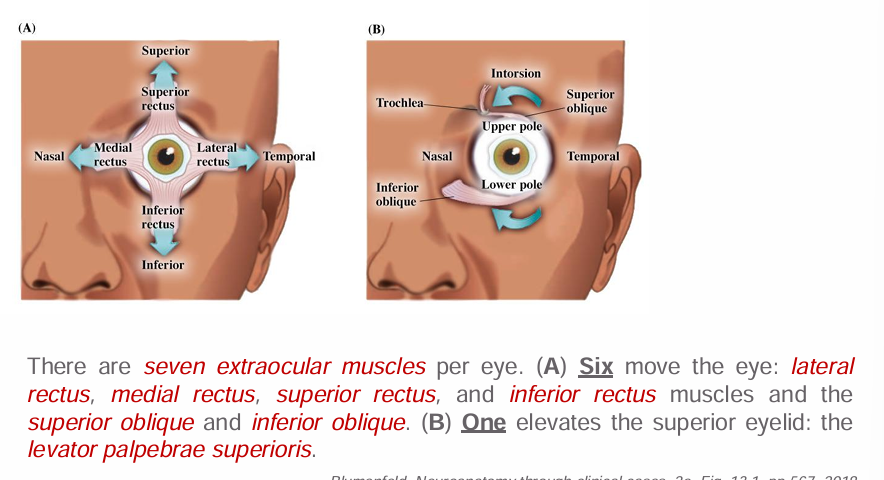
extraocular muscles in situ
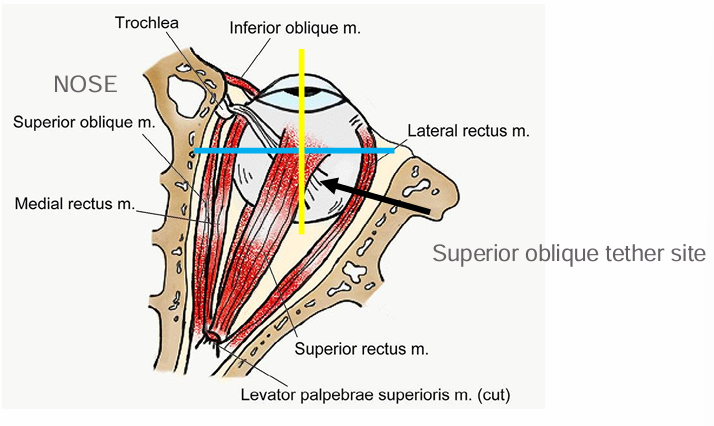
extraocular movements- lateral view
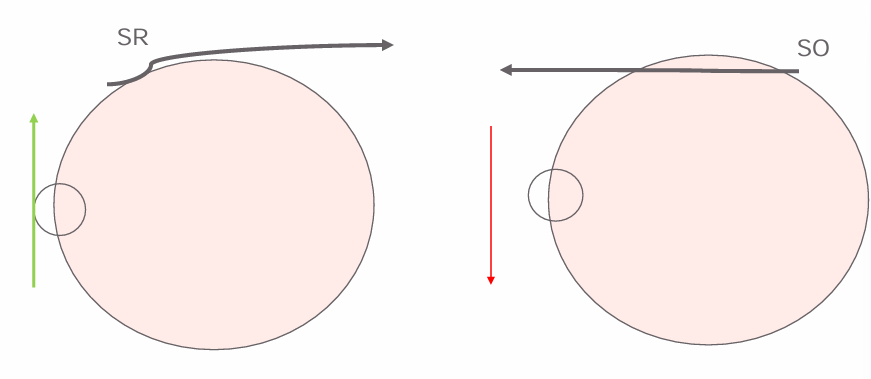
extraocular movements- top down view

effect of eye position on the actions of extraocular muscles
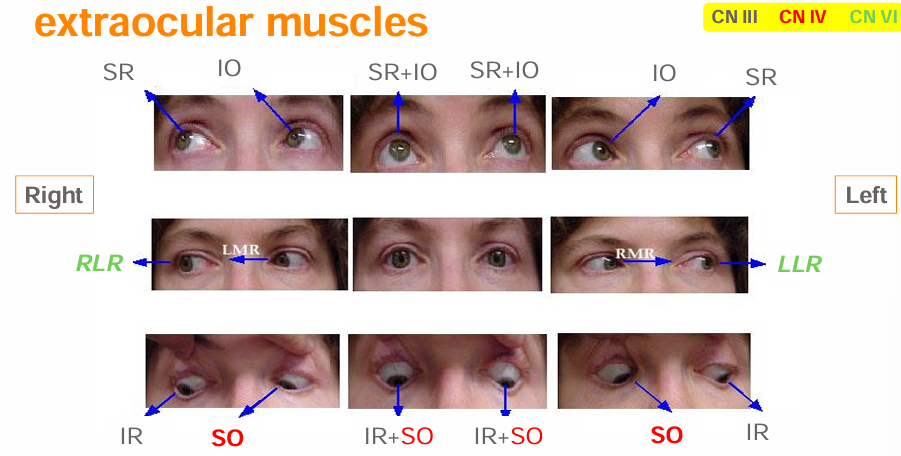
bed side eye movement testing
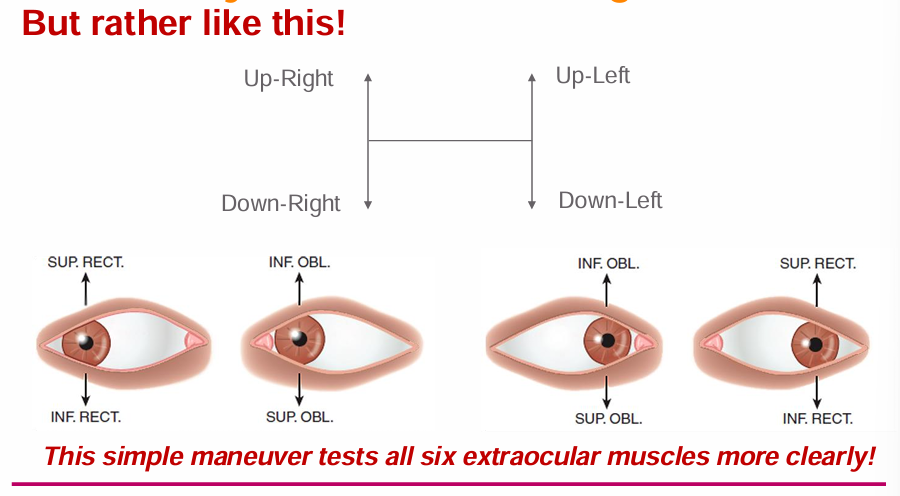
extraocular nerves

important eye muscles that are not the EOMs
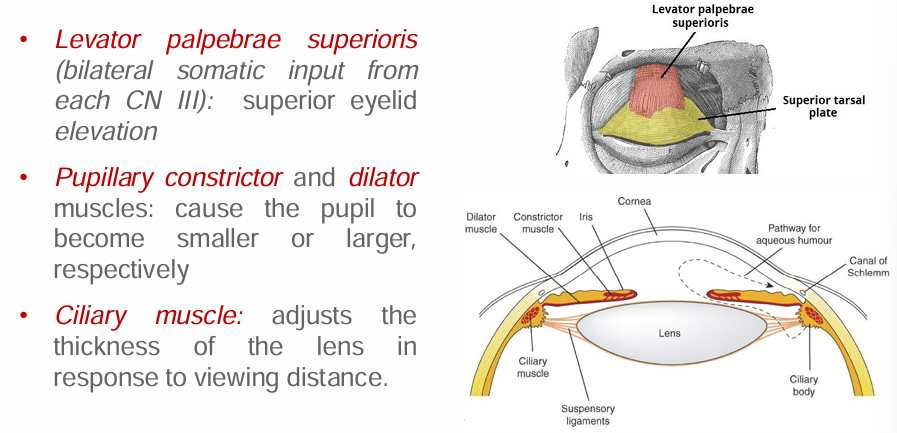
pupillary size, lid elevation, and lens curvature
-pupils controlled by both parasympathetic and sympathetic pathways
-sympathetic pathway → pupillary dilation (hypothalamus) → spinal cord → paravertebral sympathetic chain → ICA → pupillary dilator muscle and superior tarsal muscle (superior eyelid elevation)
-parasympathetic pathway → pupillary constriction and ciliary muscle contraction (EWN → ciliary ganglion → pupillary constrictor and ciliary muscles)
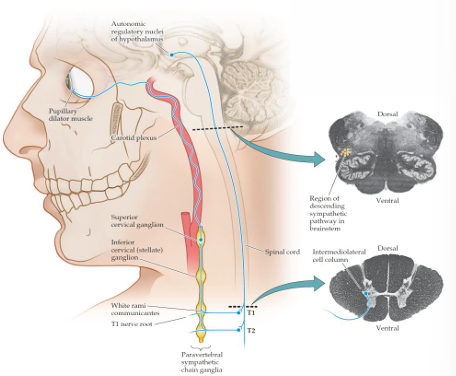
near reflex/accommodation reflex

accommodation problems and clinical test
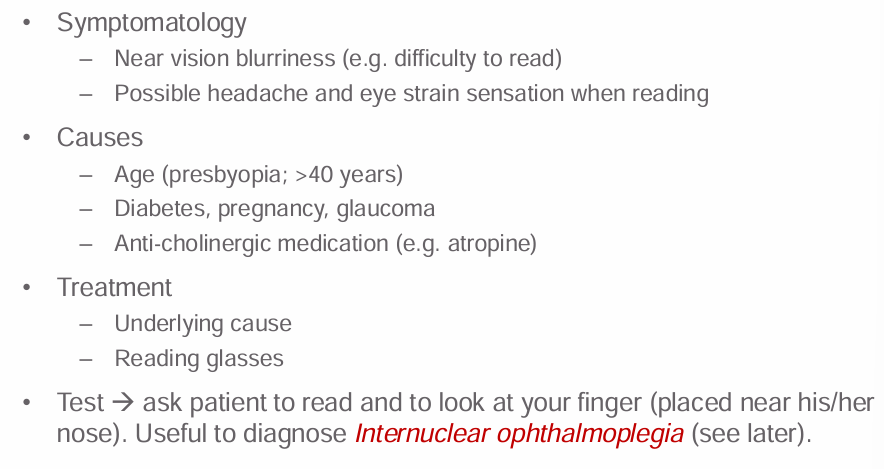
how to test and defects
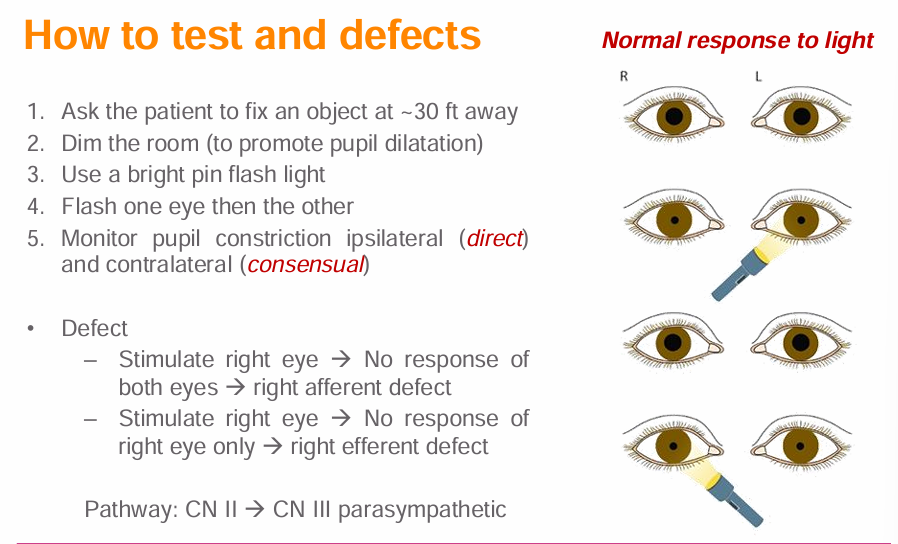
pupillary abnormalities

vestibulo-ocular reflex (VOR)

CN III nucleus and nerve exits the
-upper midbrain
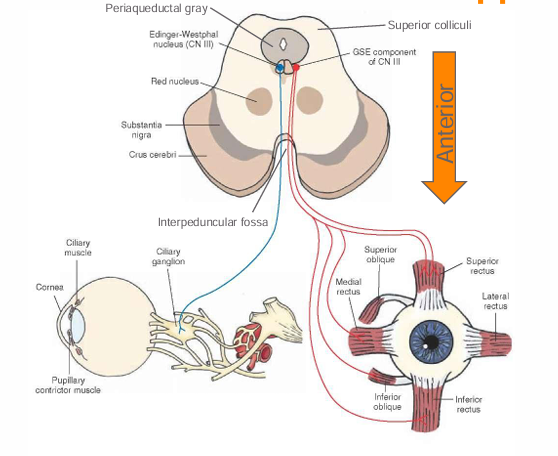
CN III nerve and nuclei carry
-parasympathetics
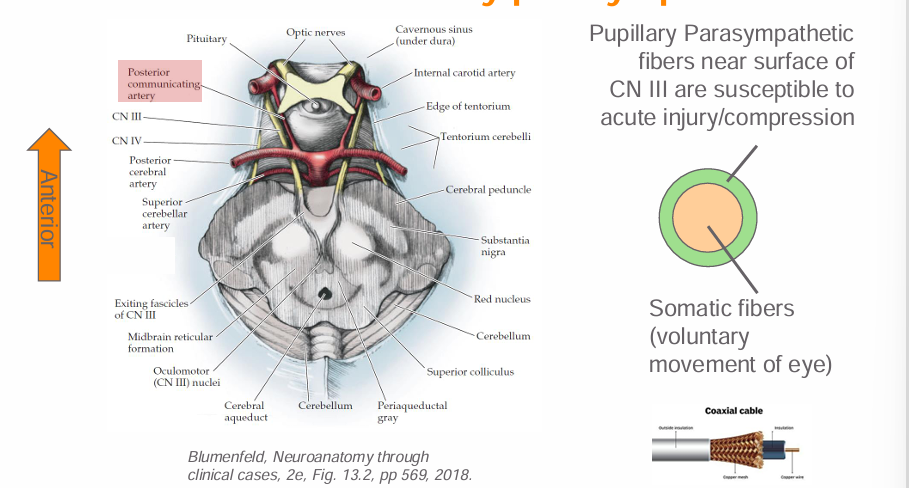
CN IV nucleus and nerve exit the
-lower midbrain
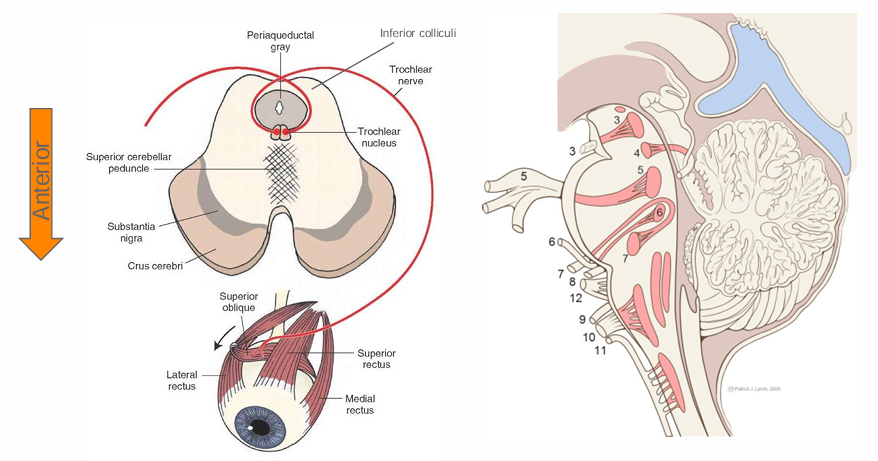
CN VI nucleus and nerve exits the
-pons

diplopia

left oculomotor (CN III) palsy
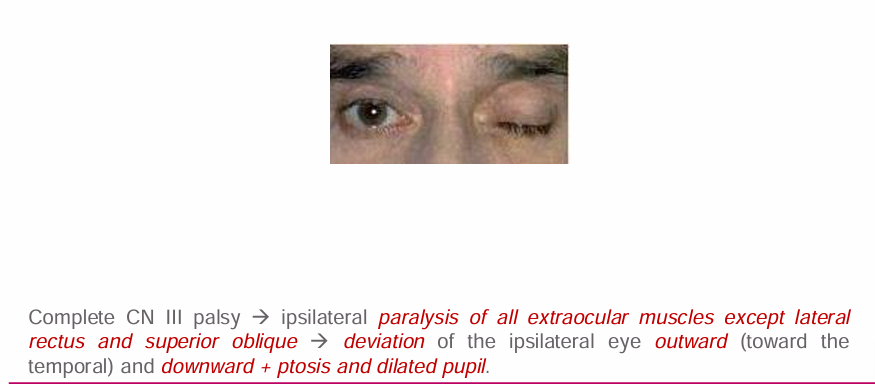
oculomotor (CN III) palsy
-approach: examine the pupil
-pupil sparing: nuclear, or intrinsic within the nerve
-etiologies: diabetic neuropathy, uncommon midbrain lesions
-pupil involved (“blown pupil”): compressive lesion- posterior communicating artery aneurysm, adjacent tumor, herniation
ptosis

right trochlear (CN IV) palsy

right trochlear (CN IV) palsy- common causes
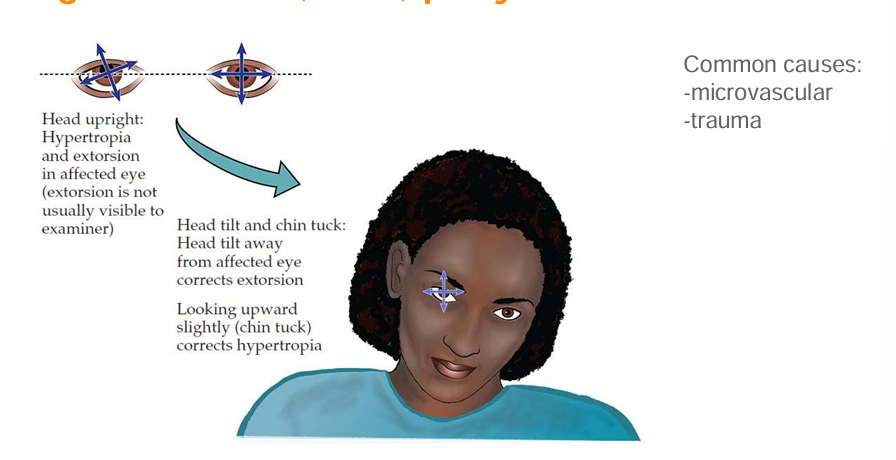
abducens (CN VI) palsy
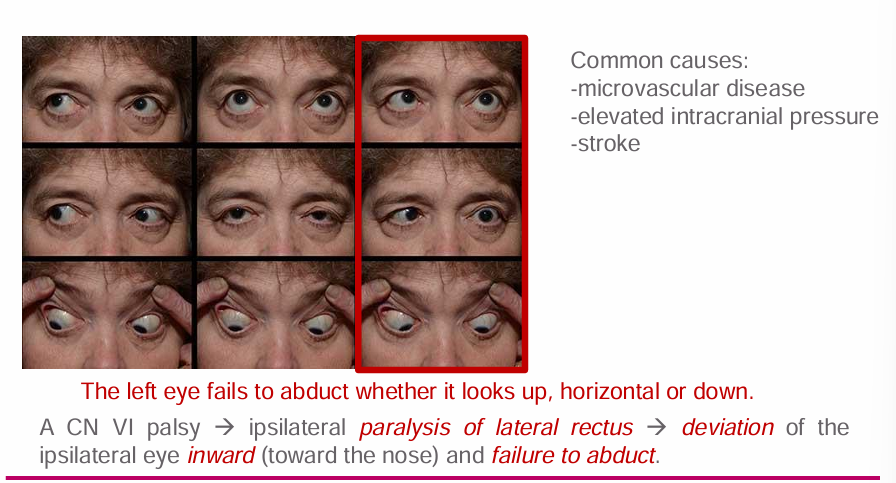
summary and tips
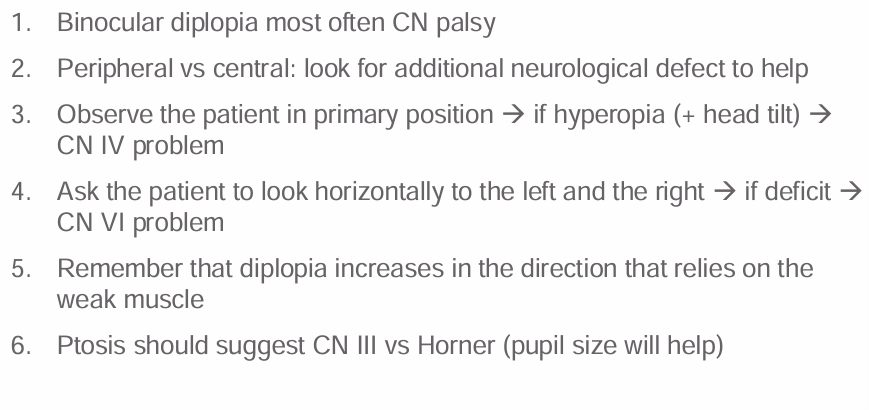
cavernous sinus

orbital apex
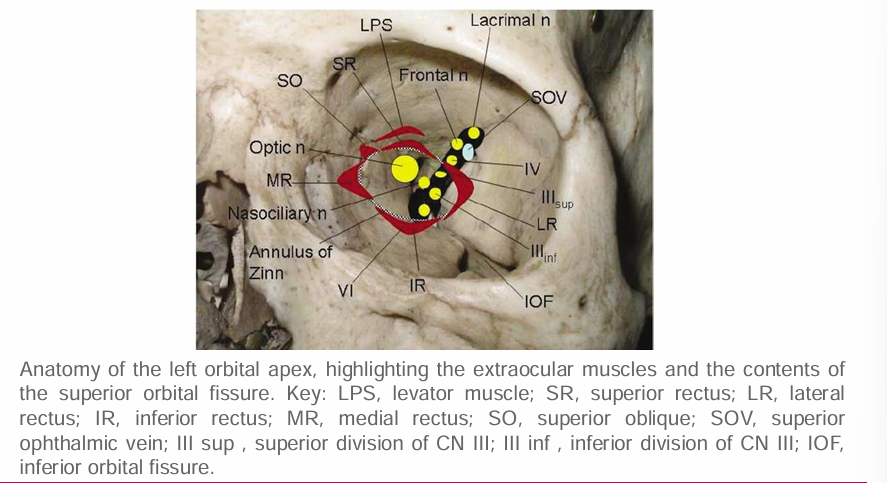
cavernous sinus v orbital apex syndromes
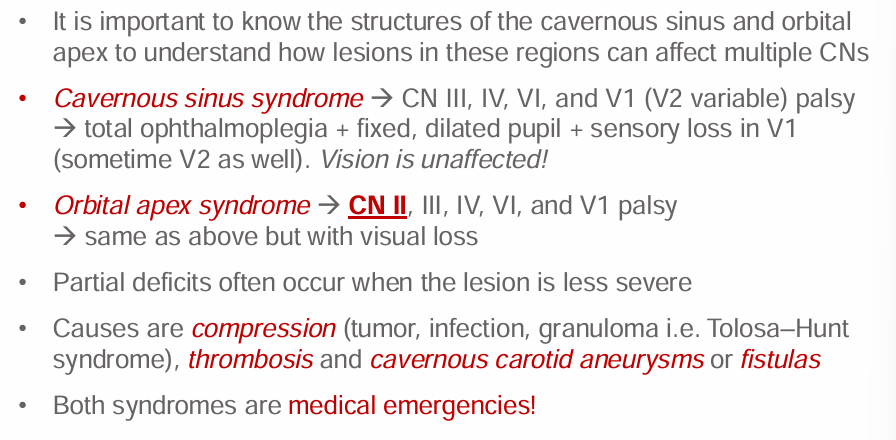
supranuclear defects- from cortex
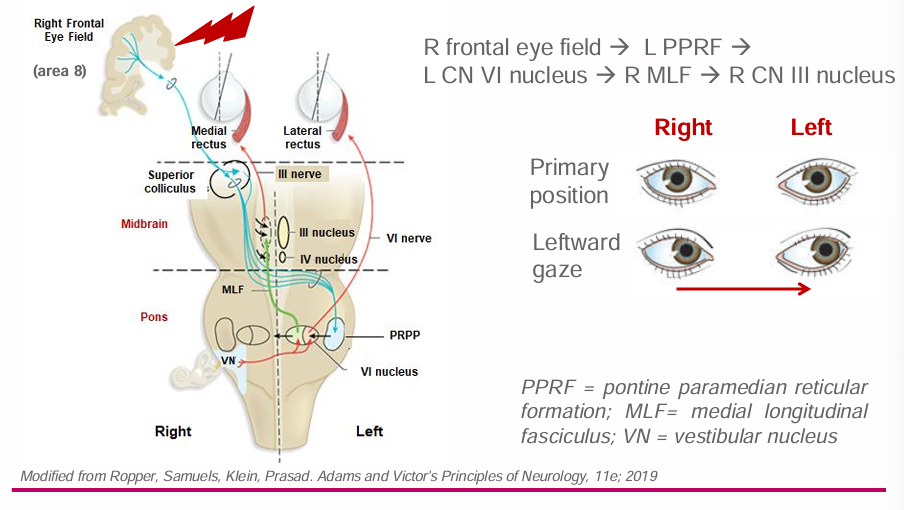
conjugate deviation of the eyes

horizontal eye movements
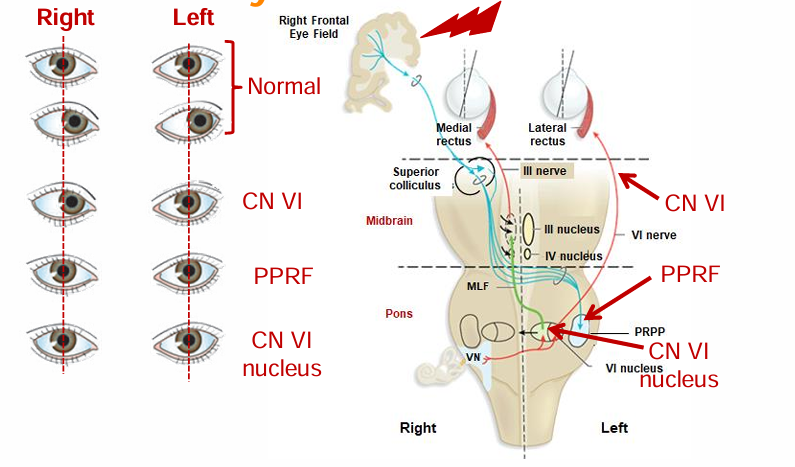
inter-nuclear ophthalmoplegia (INO)
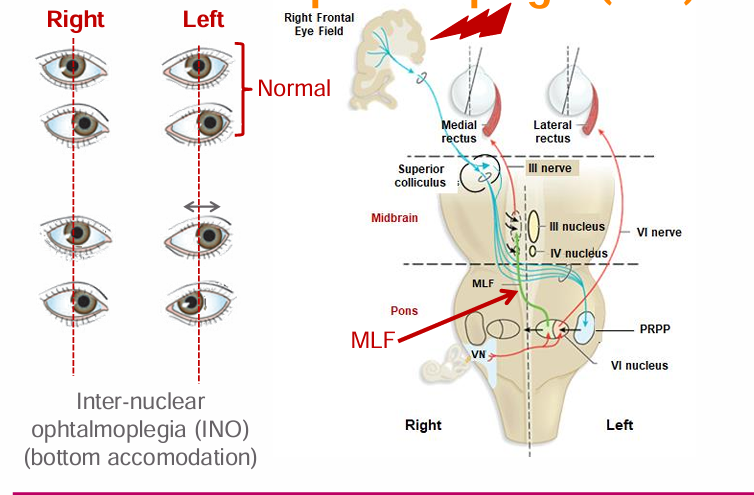
one and a half syndrome
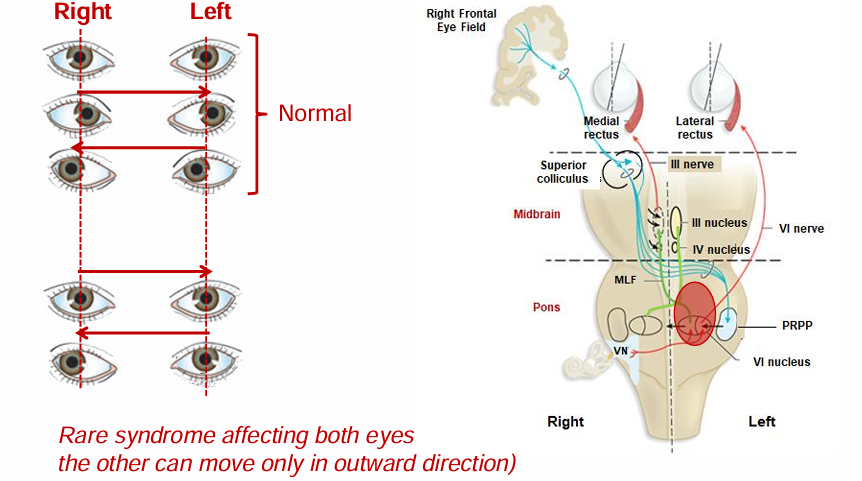
take home messages
